Post and pictures by Denesa Lockwood Oberbeck, OHSU/NW Noggin Board
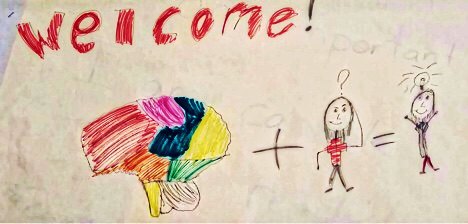
“Home of the Seagulls!”
Today we visited a 3rd grade classroom at Lakeshore Elementary School in Vancouver, Washington. Our enthusiastic volunteers included Denesa Lockwood of OHSU, Iris Gutierrez, Ruth Marigomen and Anthony Almonte from WSU, and Joey Seuferling, our Noggin Resource Council member for healthcare and hospital outreach. As usual, we came prepared with art projects and preserved brains (both human and animal); thanks to a generous donation from Gary Ciment, PhD, we now have a compelling, comparative set including macaque, fish, chicken, pig, cat and ferret), ready to engage and enlighten. What we were not prepared for was the amazing welcome that this class had in store for us!
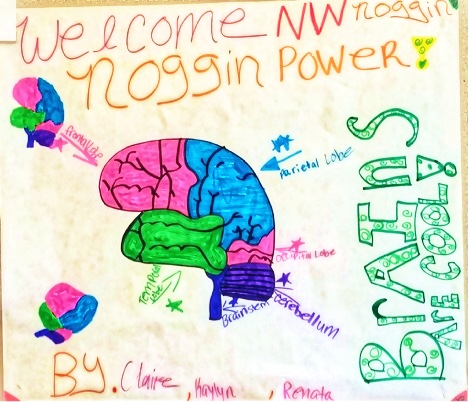
Welcome NW Noggin – Noggin Power!!
In preparation for our visit, we had asked Mrs. Shelley Moody, the (fantastic) teacher, what the students already knew about brains. She emailed in response: “We have formally talked about the amygdala, the prefrontal cortex, some on how the brain processes information, and how an overstimulated amygdala affects our ability to make good choices. It has been a while though. We talked about it a lot in the fall. So they have some very basic knowledge…”

They knew a lot! Though we did tackle a few “brain myths” in our presentation , including the pervasive “right = creative, left = logical” idea. It’s often suggested that our right hemisphere is solely involved in creating art, for example (art is “creative”), while the left hemisphere underlies some sort of “logical reasoning” needed for scientific research (science is “logical,” or “rational”)…
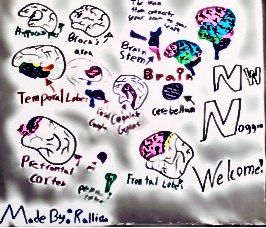
Now the two halves of our brain do have distinct roles. The left hemisphere “maps” the right side of our body for touch and movement, while the right hemisphere maps the body’s left. Our left hemisphere is also concerned with detailed, “local” processing of stimuli; for example, the words and syntax of language expressed through speech, sign or writing (in right handers, and a majority of left handers too). Damage to the left hemisphere can cause a serious loss of language comprehension, expression, or both…
EXPLORE MORE: Aphasia Information Page
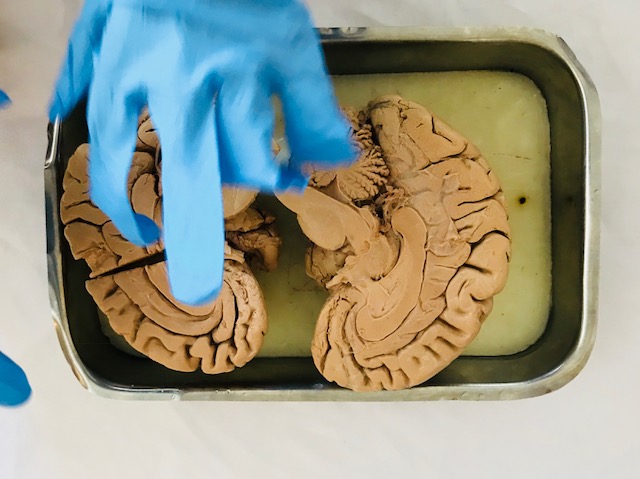
In contrast, damage to the right hemisphere can also impact language, but more in terms of its emotional content (e.g., the “sing song” quality of speech, or its prosody) and purpose – the “global” story you’re telling, or the overall point of your speech. Patients with damage to the right hemisphere often have “flat” speech, devoid of significant emotion, and may also have trouble getting to the point…
EXPLORE MORE: Hemispheric specialization for global and local processing
EXPLORE MORE: Left Brain, Right Brain: Facts and Fantasies
However, specific skills and a felt overall goal, or hypothesis are critical for both scientists and artists, who each have stories to tell, and who each develop expertise in local, detail-oriented practices and techniques. So we need our whole brain to be creative, logical, a researcher and/or an artist..!
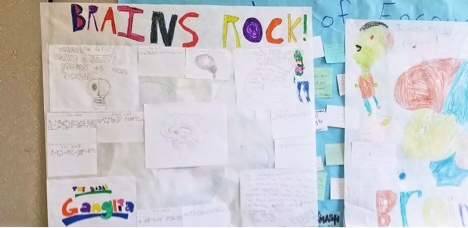
Students already knew about the various lobes of the brain, and several subcortical structures, including the amygdala. I’d say that they had quite a bit more than basic knowledge! And when we arrived in the classroom, we found so much more. Talk about excited! And knowledgeable! Adeline Oberbeck, for example, had prepared a slide show to introduce us, and she and the other students had also put together numerous posters to not only welcome our volunteers, but also to share what they had discovered about the brain.
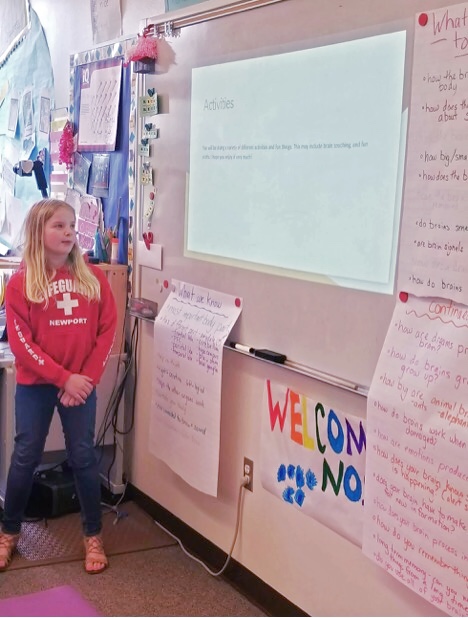
We learned from these students almost as much as we came prepared to teach! They shared with us their favorite “brain app,” 3-D Brain from the American Academy for the Advancement of Science (AAAS); one I would recommend for both students and teachers alike…

LEARN MORE: 3D Brain App
LEARN MORE: AAAS Science Lessons and Tools for K-12
After going over their posters, we encouraged questions…
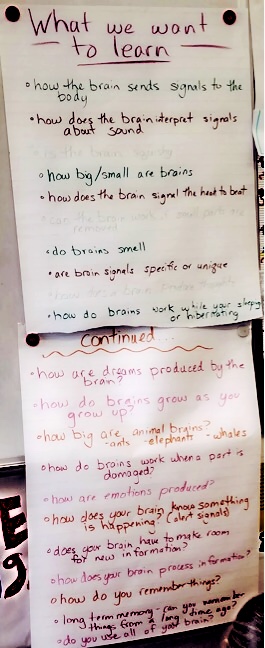
“How does your brain create dreams?” “Can you live with a brain transplant?” “If you were to get a brain transplant, would you have the donor’s memories?” “How big are animal brains?” “How are emotions produced?” “How do brains work where a part is damaged?” “How do brains grow as you grow up?” “Do you use all of your brain?” “Where am I in my brain?”

Joey, Ruth, Anthony and Iris offered their own informed ideas. It was a lively discussion! The answer to many questions often contained the word “yet.” Mrs. Moody astutely noted that there was a sense of promise in all of the answers. This is definitely true. We need more research, and more scientists with creative approaches for figuring out our brains through experiment, who can also effectively communicate what they find!
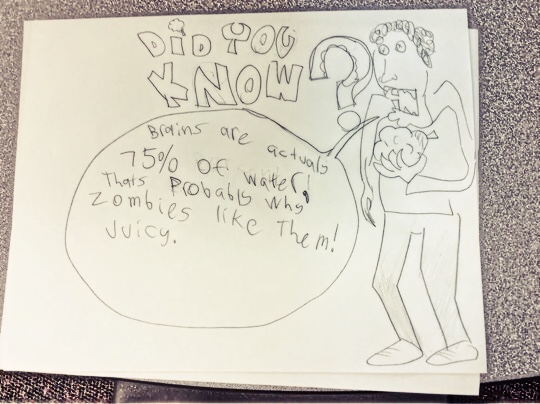
We then set to work utilizing the humble pipe cleaner to model specialized brain cells – answering many questions about signal transmission along the way.
LEARN MORE: STEAM Art Projects
LEARN MORE: How do neurons send electrical messages?
We also utilized the students’ excellent knowledge of the different lobes of the brain to make a collaborative “brain map,” showing how each student would illustrate the various parts of the brain at work…
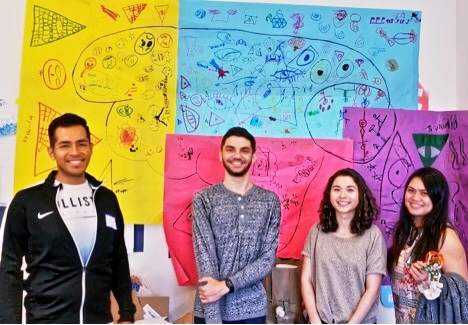
And then we set to work to allow each student the opportunity to hold an actual brain!

After all this discussion and the examination, we taught the students how to make their own clay models of the brain, emphasizing how each brain is at least a little different in size and shape…

Many thanks to Shelley Moody and her artistic, brainy students in Vancouver!


